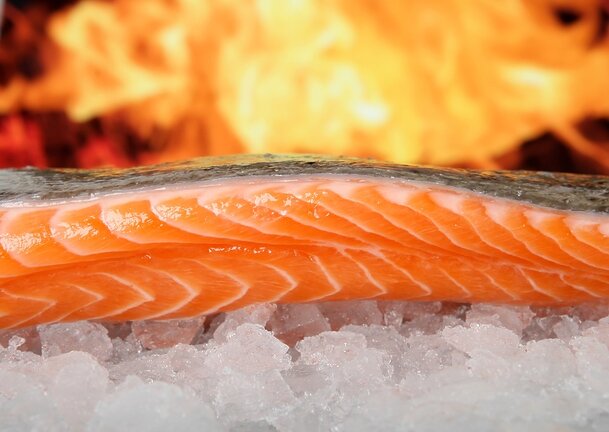Mastering the Art of Cooking Fresh Fish: Intermediate Techniques and Flavors
Introduction:
Cooking fresh fish can seem intimidating to some, but with a few intermediate techniques and flavors, you can elevate your skills in the kitchen. Whether you're an aspiring chef or a home cook looking to expand your repertoire, this step-by-step recipe guide will help you master the art of cooking fresh fish. We'll explore various cooking methods and flavors that will enhance the natural flavors of fish while adding depth to your dishes.
Step 1: Choosing the Right Fish
When it comes to selecting fresh fish, look for clear eyes, firm flesh, and a mild scent of the ocean. Opt for sustainably sourced seafood whenever possible. Some popular choices for cooking include salmon, halibut, sea bass, trout, or snapper.
Step 2: Preparing Your Fish
Before starting any recipe or technique with fresh fish, it's essential to properly prepare it. Begin by rinsing your fish under cold water and patting it dry with paper towels. Remove any scales using a scaling knife by gently scraping from tail to head. Next, gutting or filleting is necessary depending on your preferred cooking method.
Step 3: Grilling
Grilling is an excellent technique for showcasing the delicate flavors of fresh fish while imparting smoky notes. Preheat your grill to medium-high heat (around 400°F). Season both sides of your prepared fish with salt and pepper or other desired spices like garlic powder or paprika. Lightly oil the grates before placing the fish on them at an angle against them (to create beautiful grill marks). Cook for about five minutes per side until done—cooking time may vary depending on thickness.
Step 4: Pan-Searing
Pan-searing is perfect when you crave a golden crust alongside moist flaky interior flesh in just minutes! Start by heating a skillet over medium-high heat and adding a tablespoon of oil or butter. Season your fish fillets with salt and pepper, or use a spice blend like lemon-pepper seasoning for added flavor. Place the fillets presentation side down (the side you want to show off) in the hot skillet, pressing them gently with a spatula to ensure even contact with the pan. Cook for about three minutes per side until nicely browned.
Step 5: Baking
Baking is a foolproof method that ensures evenly cooked fish while maintaining its moisture. Preheat your oven to 375°F (190°C). Season your fish fillets with salt and pepper, then place them on a baking sheet lined with parchment paper or aluminum foil lightly brushed with oil to prevent sticking. Drizzle some olive oil over the top and add additional flavors like fresh herbs such as dill, thyme, or rosemary. Bake for around 10-15 minutes depending on thickness until the flesh is opaque and easily flakes when tested with a fork.
Step 6: Adding Flavor
Experimenting with different flavors can make each dish unique and exciting. Here are some popular flavor profiles that pair well with fresh fish:
- Citrus: Squeeze lemon or lime juice over grilled fish before serving.
- Fresh Herbs: Sprinkle chopped herbs like parsley, basil, cilantro, or chives onto pan-seared fish.
- Spices: Create an aromatic spice rub using cumin, paprika, coriander, or chili powder.
- Sauces & Butters: Accompany your cooked fish dishes by preparing delicious sauces such as hollandaise sauce infused with tarragon or herb-infused compound butters.
Summary:
With these intermediate techniques and flavor combinations at your fingertips, cooking fresh fish will become an enjoyable culinary adventure rather than an intimidating task! Remember always to source sustainable seafood options while considering personal preferences when selecting flavors. So go ahead—get creative, experiment with different techniques, and savor the delights of perfectly cooked, flavorful fish dishes in your own kitchen.
